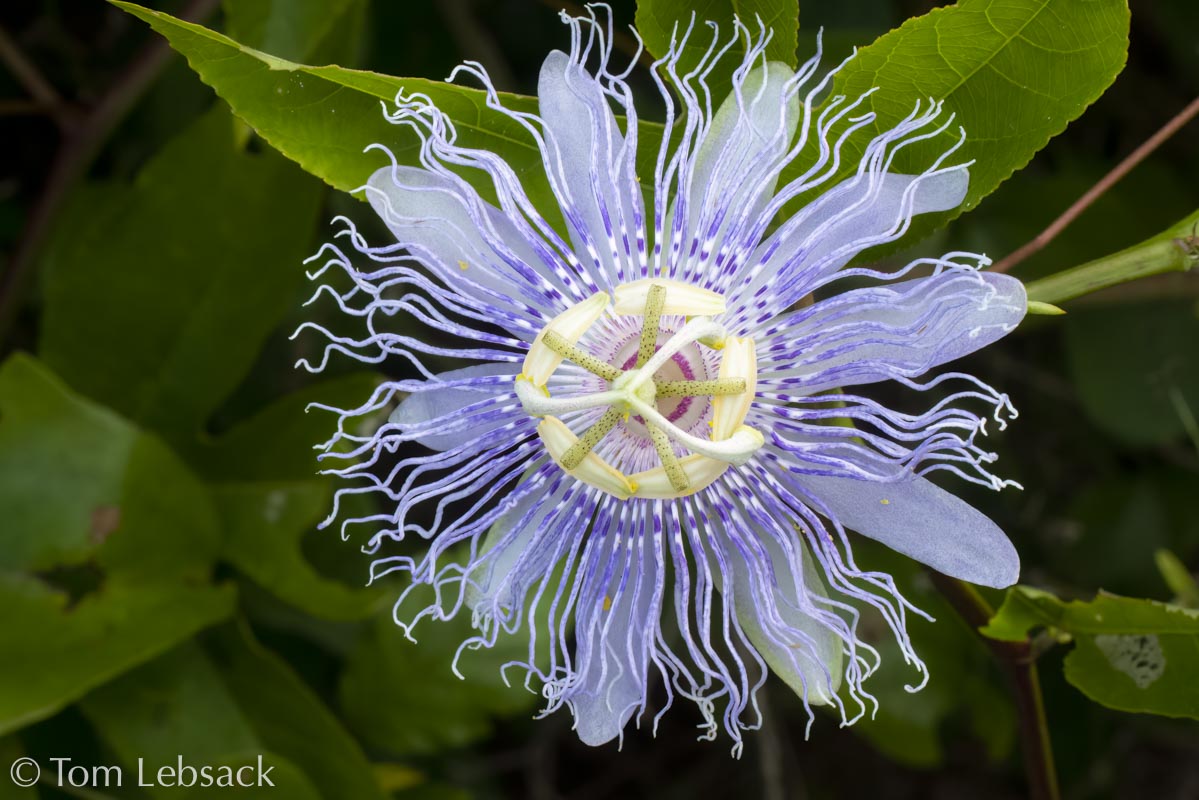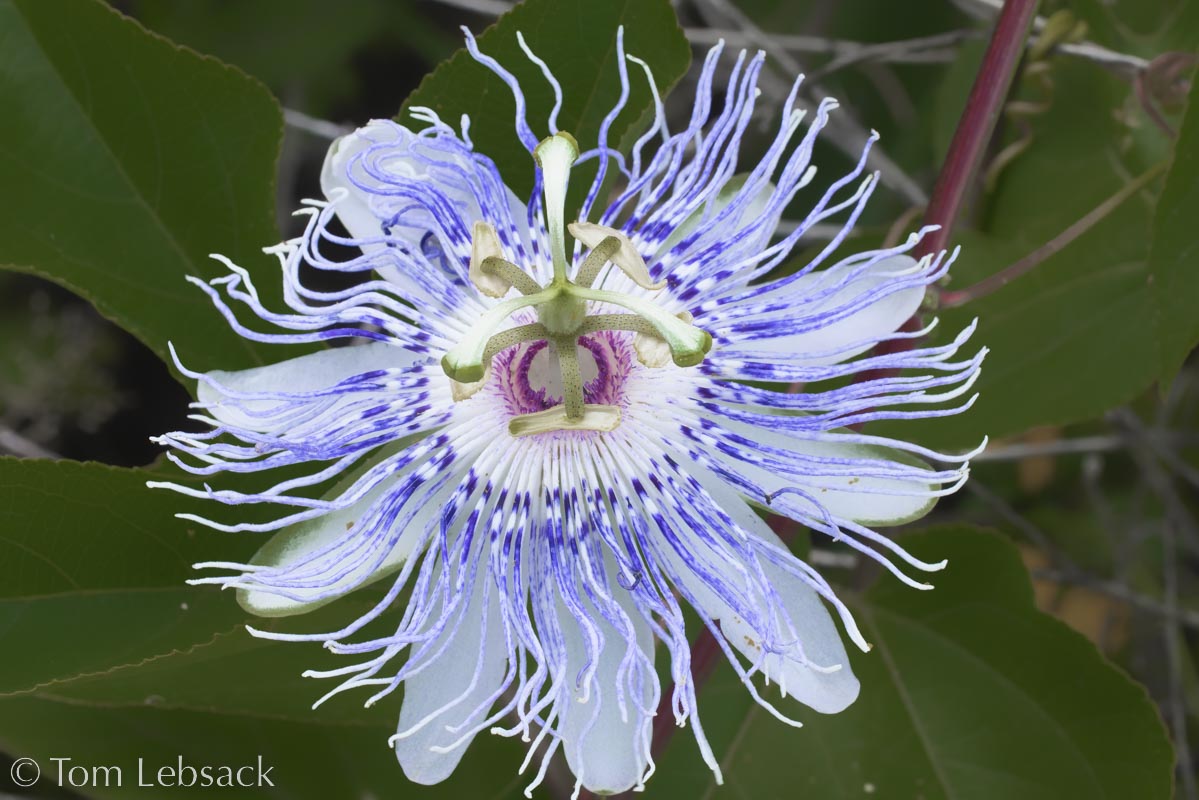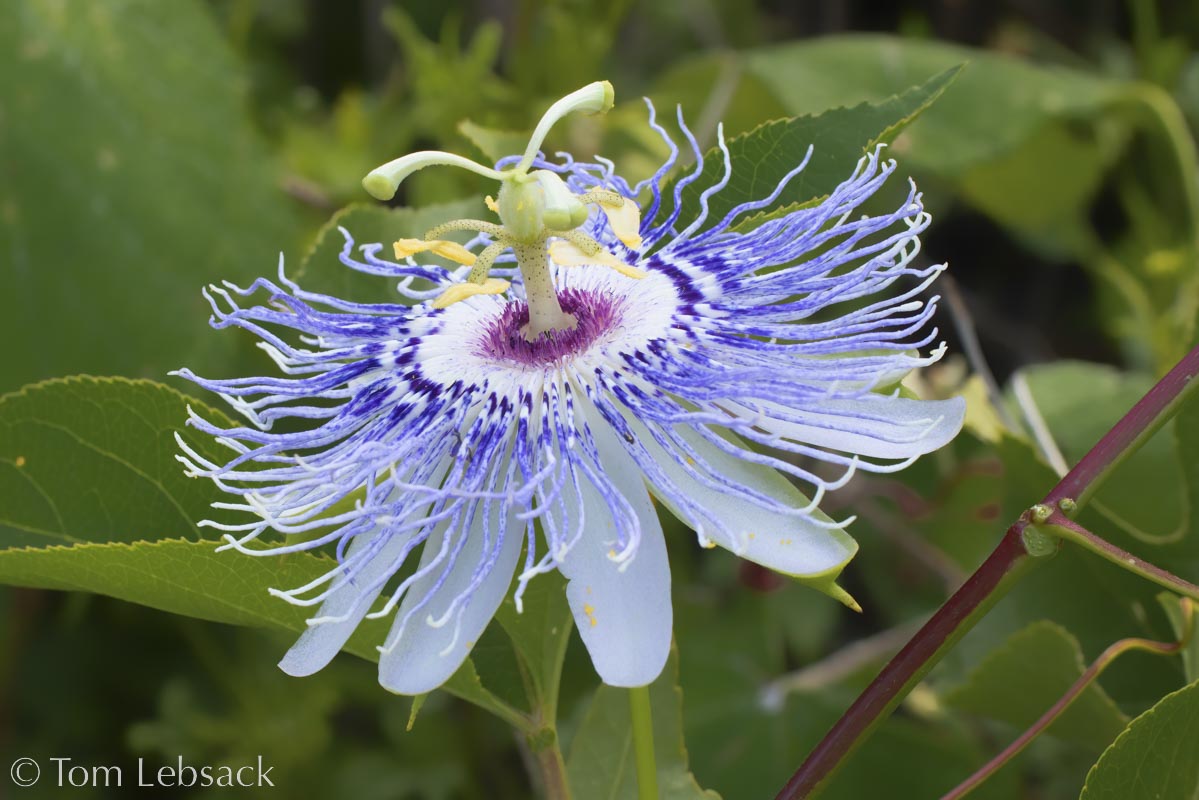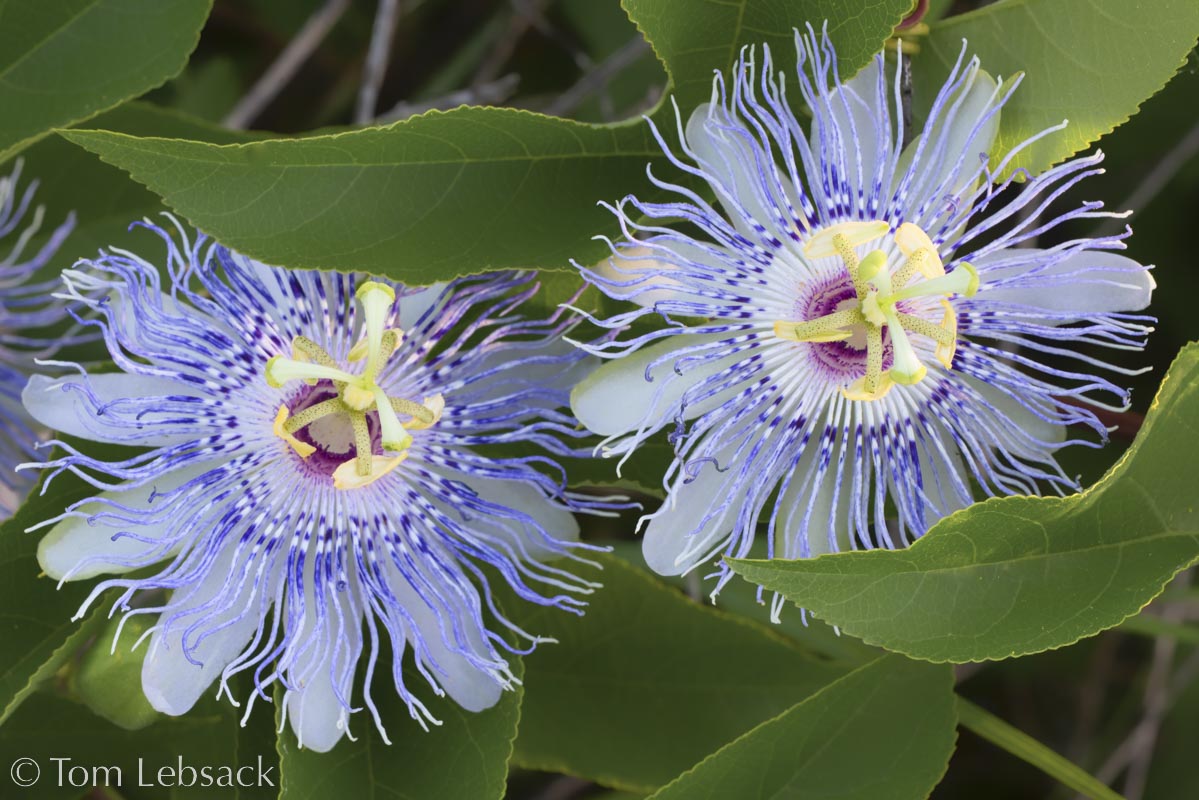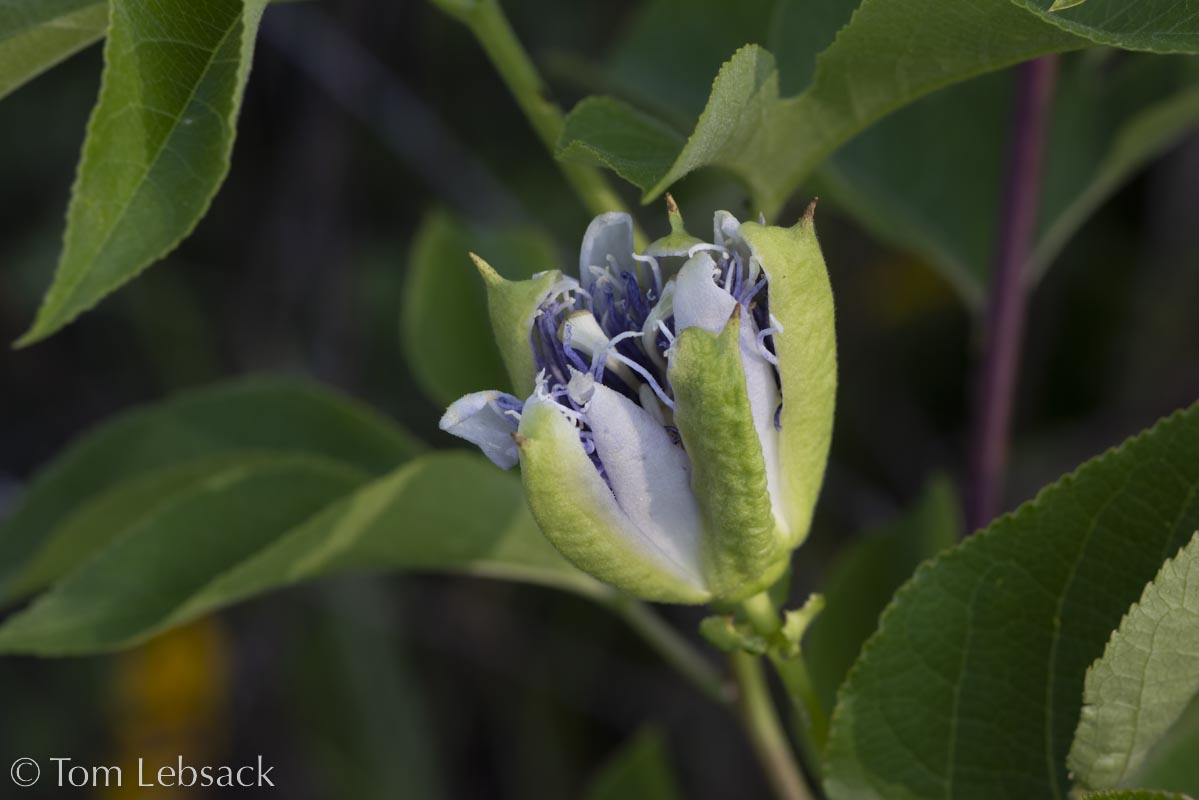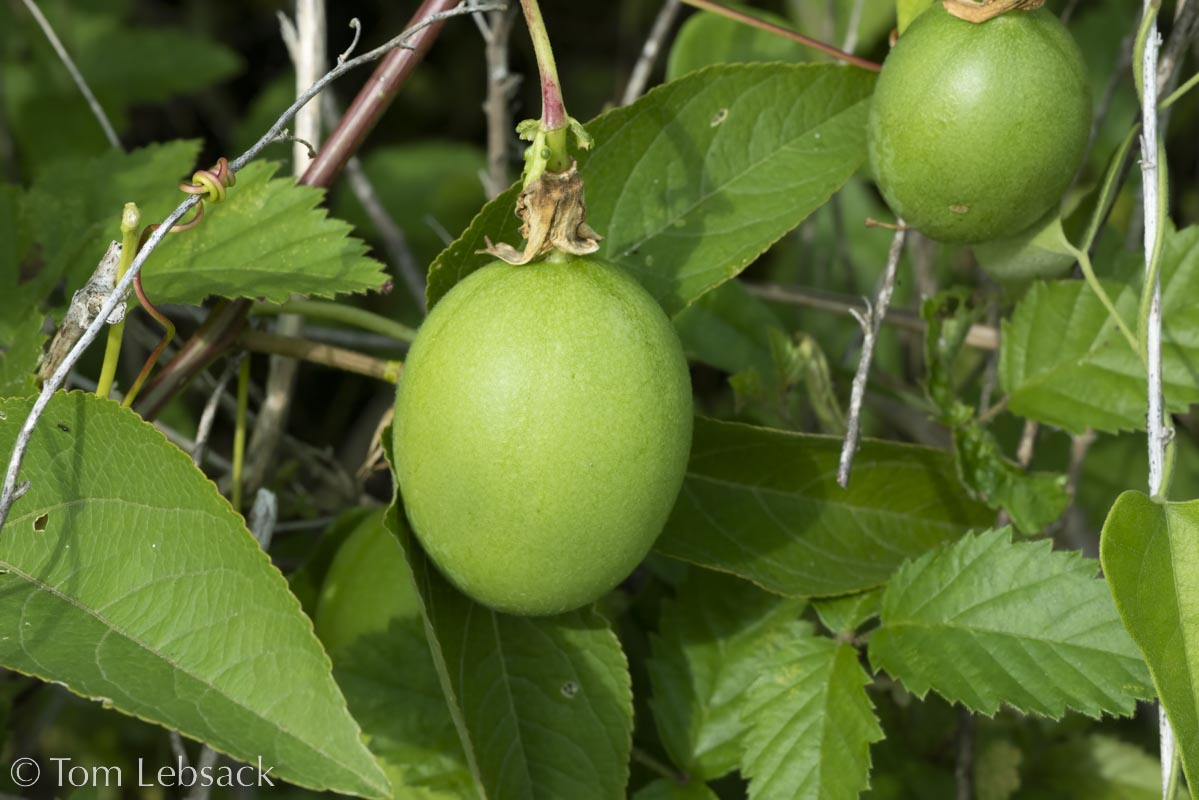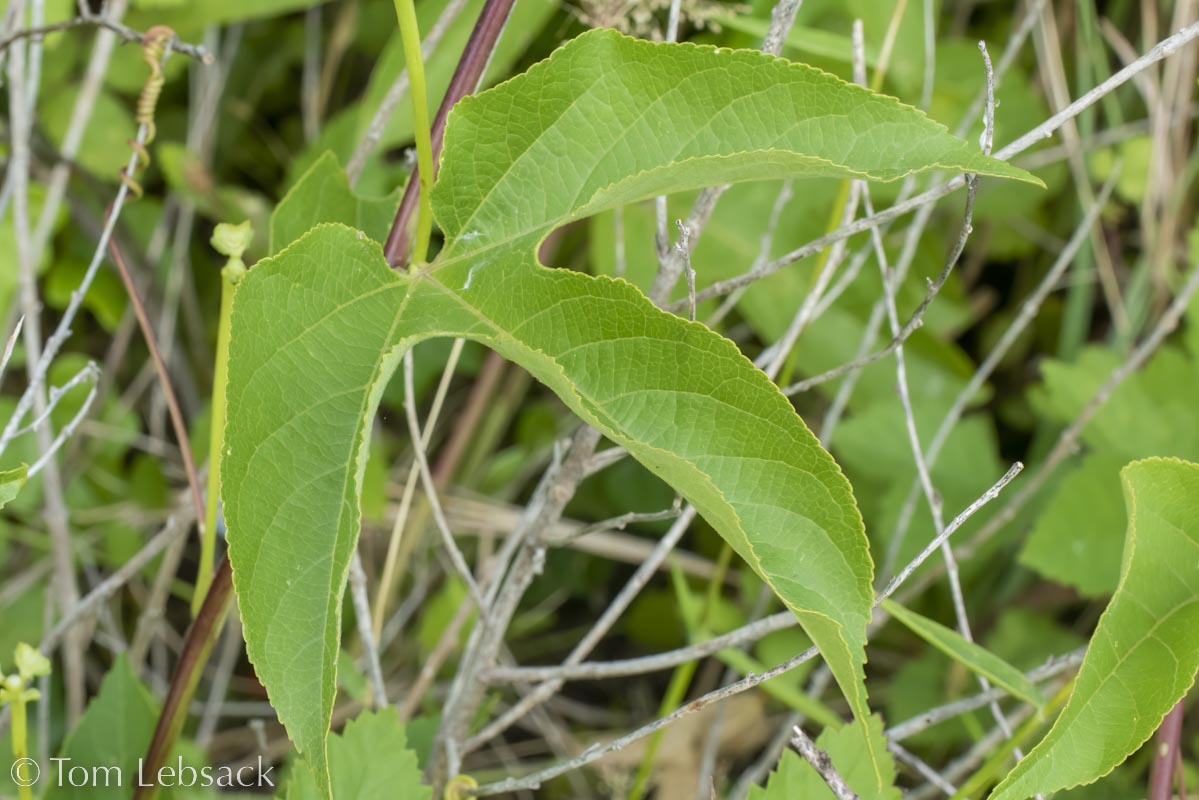Texas Wildbuds
Passiflora incarnata
(Purple Passionflower)
| Scientific Name | Passiflora incarnata | USDA PLANTS Symbol | PAIN6 |
| Common Name | Maypop, Purple Passionflower | ITIS Taxonomic Serial No. | 504139 |
| Family | Passifloraceae (Passionflower) | SEINet Reference |
Click Here |
| Description | Habitat: Open woods, open areas, along roadsides and fencerows; eastern third of Texas and east. Plant: Trailing or climbing perennial vine up to 20 feet long, often entwined with other shrubs and trees. Leaves: Deciduous, alternate, large (2-1/2 to 6 inches long and almost as wide), deeply three-lobed on petioles up to 3 inches long; lobes are ovate-lanceolate to oblong-lanceolate; upper surfaces are dark green and lower grayish; edges are finely serrate; tendrils in leaf axils. Inflorescence: Large, showy flowers arising from leaf axils opening mid-day or later; 2-3/4 inches across; white to pale lavender or blue sepals, 0.8 to 1.2 inches long and 0.4 inches wide; petals look the same but not as large as sepals; petals and sepals subtend a corona of wavy blue or purple to pink filaments 0.6 to 0.8 inches long; 5 stamens with yellowish anthers and 3 club-like stigma protruding from center above the purple nectar ring. Bloom period: April to August. Fruit: Large berry, up to 2 inches long, ovoid to nearly spherical, green becoming orange yellow when ripe. References: "Manual of the Vascular Plants of Texas" by Correll and Johnston, Alabama Plant Atlas, Wildflower Center and "Wildflowers of Texas" by Michael Eason. |
BONAP Distribution Map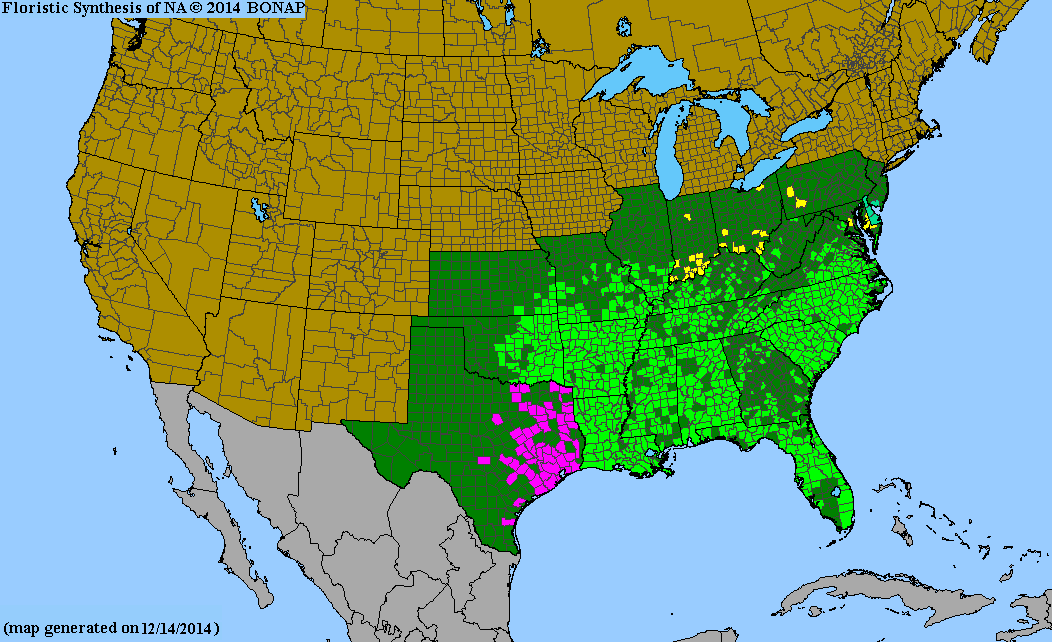 Map Color Key Map Color Key |
Texas Status: Native |
Banner photo of Castilleja indivisa and Lupinus ssp. taken along FM 1323 north of Johnson City, Blanco County
© Tom Lebsack 2025
Every attempt is made to provide accurate, up-to-date, and relevant information, but the completeness or accuracy of any information presented on this website cannot be guaranteed. I use authoritative references to insure high standards of accuracy and review and update the information frequently.
